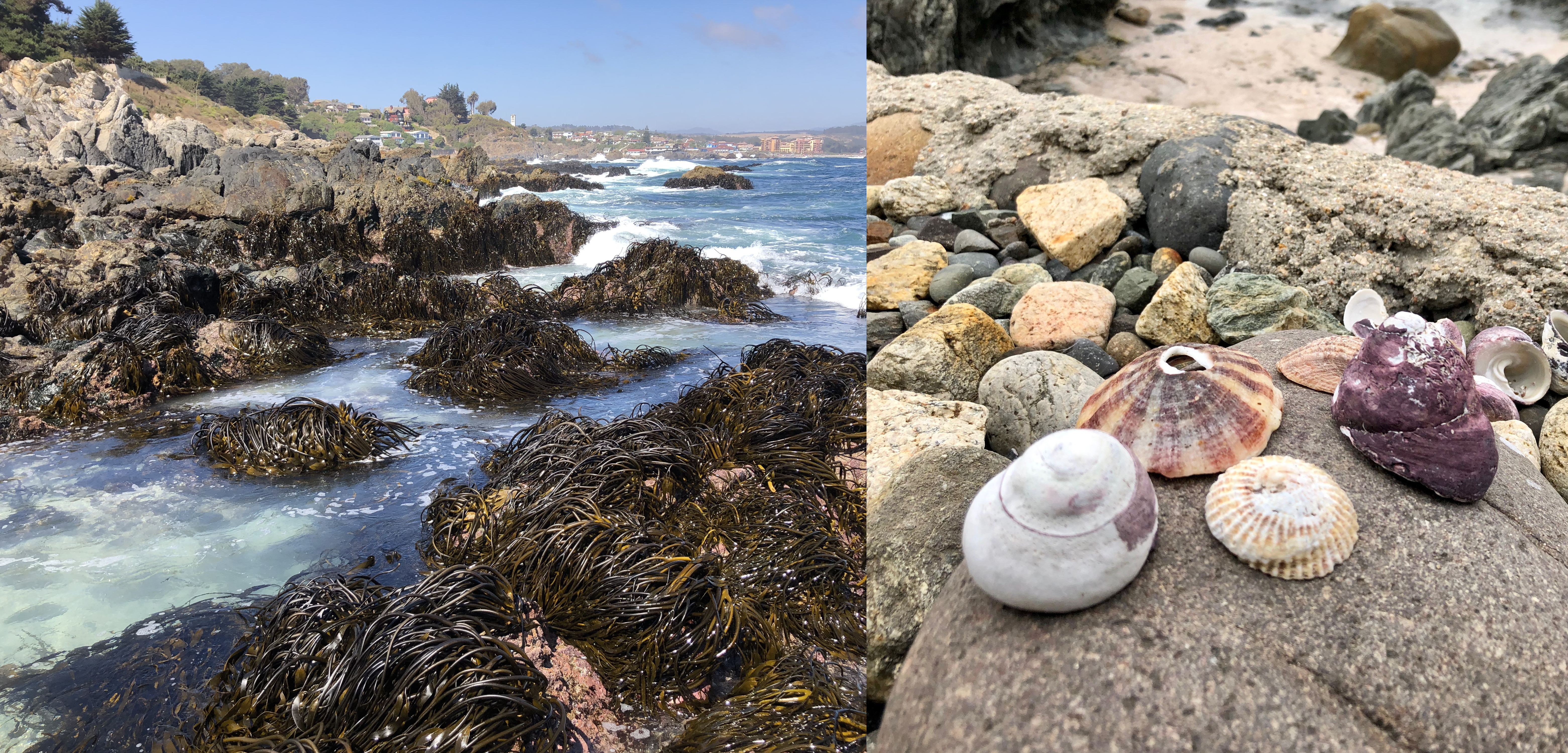By Ann Bishop, MLML Phycology Lab
 This post is a companion to the recent post about the Global Kelp Systems course. While both Chile and Monterey are dominated by kelp, they are not identical. Part of the fun of the class was the ability to compare and contrast the local environments.
This post is a companion to the recent post about the Global Kelp Systems course. While both Chile and Monterey are dominated by kelp, they are not identical. Part of the fun of the class was the ability to compare and contrast the local environments.
One of the unique advantages of Moss Landing Marine Labs is the opportunity to participate in international science education. This winter a small group of MLML students traveled to Central Chile to participate in an international class focused on kelp ecology. In Chile, kelp --mainly the genus Lessonia-- doesn’t stop at the subtidal but instead comes all the way into the intertidal. What’s even more surprising is the first glance of the Las Cruces’ Chilean coast looks like it could be the rocky shores of Monterey or Pacific Grove. But, looking closer it is quite a different world.

Starting at the top of the intertidal the first thing you notice are the shells. Like Monterey Bay there are lots of snails, limpets, and other gastropods. There are both living ones holding close to the rocks at low tide, and the remains of others tossed up by waves into the highest tide line. Large or small they capture many of the bright colors of both land and sea.
Next, as the tide recedes, what you think might just be a strange bit of seaweed or rock turns out to be an organism we haven’t seen much of recently: sunflower stars. While not the same as the ones we have here in Monterey, they nevertheless play a similar role. These beautiful echinoderms roam through the intertidal hunting prey and shaping the intertidal habitat.

Finally, in the low wave-ripped rocks, is the Lessonia. This kelp grows from bulky hold fasts and thick stipes (think of a "stem") into blades that whip back and forth in the surf. At the base, other seaweeds and crabs hide in and underneath this unique seaweed. Scattered throughout this swaying kelp is another type of brown seaweed from a group called fucoids: this is Durvillaea. Both of these species are incredibly important to local fisheries and Durvillaea is also dried and eaten locally.
These descriptions don’t even begin to encompass to diversity and wonder that we experienced in this new, yet strangely familiar, place. It’s a great reminder to explore and appreciate the creatures we share our own backyard with in Monterey Bay.

